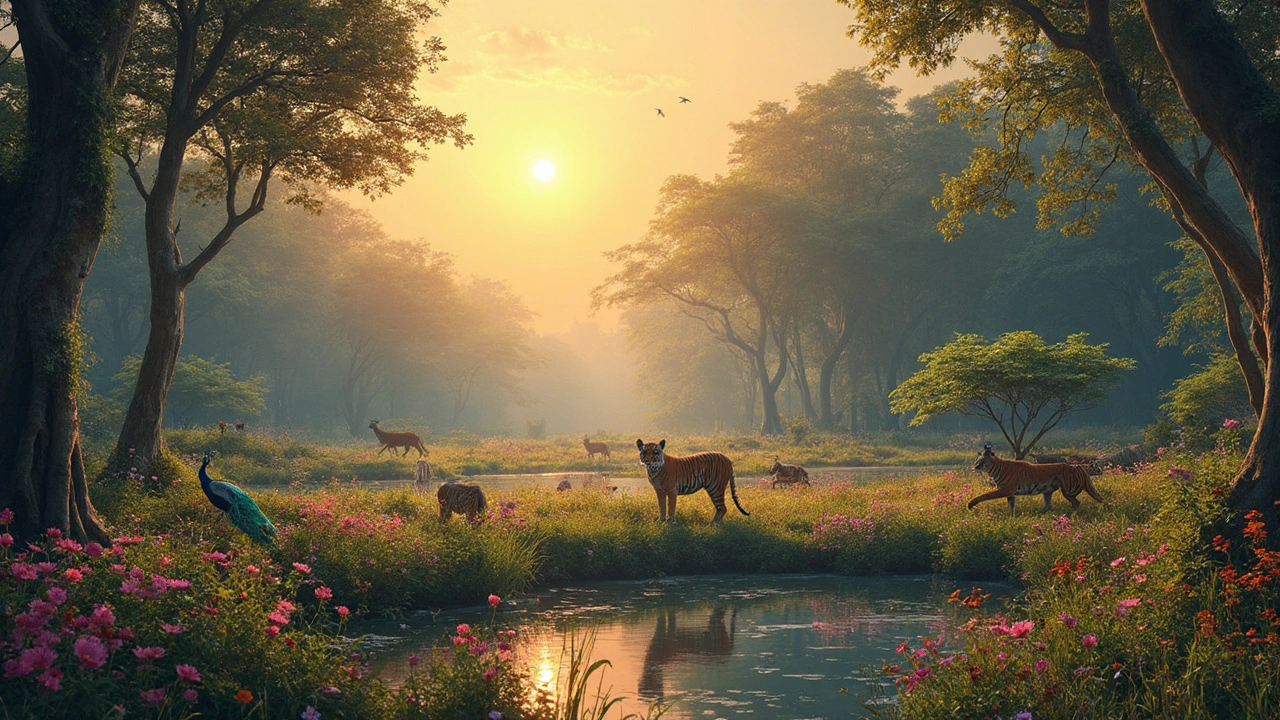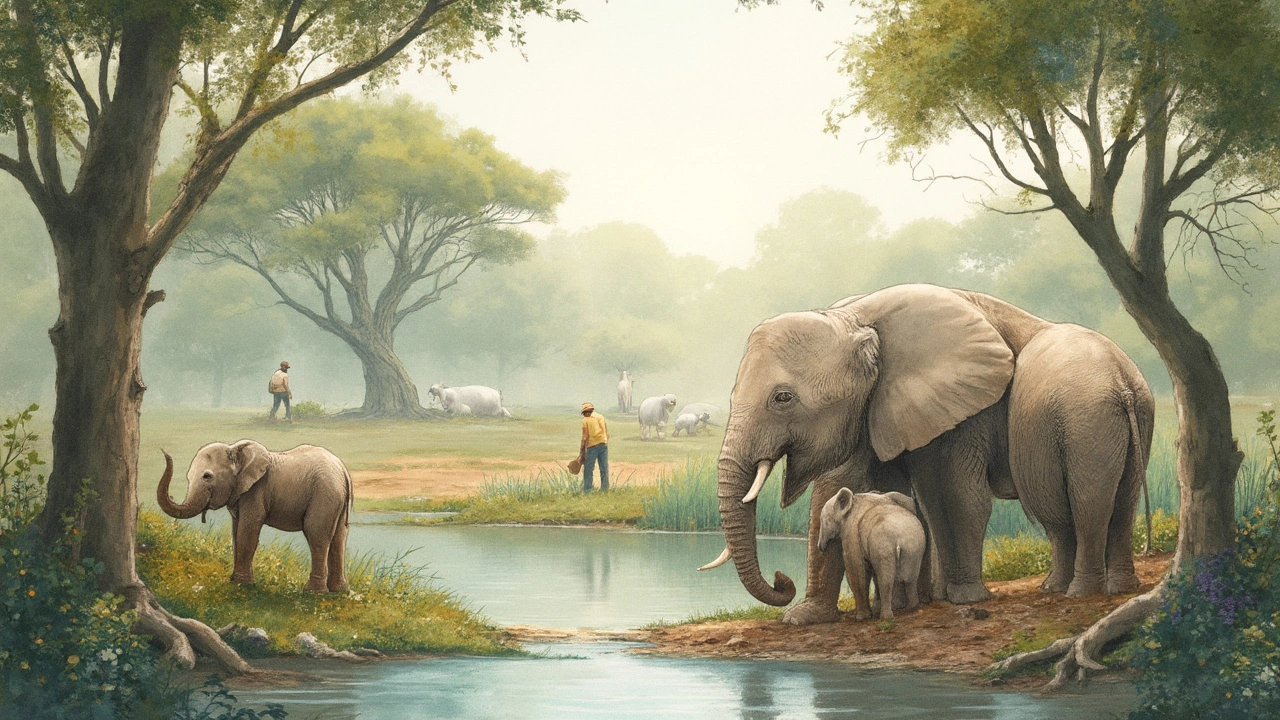Are Animals Safe or Threatened in a Wildlife Sanctuary?
 Apr, 2 2025
Apr, 2 2025
So, are animals really safe in wildlife sanctuaries? It might seem like these protected areas are the ultimate refuge for wildlife, but the reality can be a mixed bag. Sure, they offer a slice of natural habitat and a respite from urban sprawl, but it's not all sunshine and roses. Just like any place with changing dynamics, sanctuaries have their fair share of challenges too.
For starters, these sanctuaries are often designed to mimic the natural habitats of the animals, giving them room to roam and behave as they would in the wild. Sounds perfect, right? But hold on—there are issues like poaching and illegal trafficking that some sanctuaries confront, regardless of their fences or guards. Evidence over the years suggests that while sanctuaries are generally safer havens compared to the outside world, they're not immune to threats.
- Purpose of Wildlife Sanctuaries
- Challenges Facing Sanctuaries
- Success Stories and Failures
- Improving Animal Welfare in Sanctuaries
Purpose of Wildlife Sanctuaries
The main idea behind wildlife sanctuaries is pretty straightforward: create a safe space where animals can live in peace, away from the various threats they face in the wild. This includes things like habitat destruction, poaching, and human encroachment. Sanctuaries provide a controlled environment that allows researchers and conservationists to focus on preserving species and their habitats.
One key role of these sanctuaries is to act as a breeding ground for endangered species. Take the black rhino, for example, which has seen its population grow in certain protected areas due to attentive management and breeding programs. There's a fascinating case with India's Kaziranga National Park, where meticulous efforts led to an increased number of Greater One-Horned Rhinoceroses.
Another solid reason for these sanctuaries is educating the public. Many sanctuaries allow visitors, giving people a chance to see animals they've only seen in books or on screens. This firsthand experience can lead to a greater appreciation and understanding of the animals and the need for conservation, turning visitors into advocates for wildlife protection.
Sanctuaries also play a crucial role in scientific research. They offer a controlled environment to study animal behavior, health, and environmental impact without the constant threats animals face in unprotected habitats. This research can lead to better strategies for wildlife management not just inside sanctuaries but in the wild too.
- Provide a safe haven for endangered and threatened species
- Act as breeding grounds to help increase population numbers
- Educate the public and foster a connection with wildlife
- Facilitate crucial research and conservation projects
While managing a sanctuary comes with its own set of challenges, these areas are vital stepping stones for protecting the rich biodiversity of our planet. They may not end every threat, but the positive impact they can have on wildlife conservation is undeniable.
Challenges Facing Sanctuaries
Even in places meant to protect them, animals can face unexpected problems. Wildlife sanctuaries are supposed to be safe zones, but they run into various issues that can make life tricky for the animals they shelter.
One biggie is habitat degradation. While you'd think these spaces would be lush and thriving, things like pollution, invasive species, and even climate change can mess with the natural environment, making it less cozy for the animals. Also, some sanctuaries have to deal with land size issues— their limited space can put stress on the animals and lead to conflicts over resources.
Then, there's the human factor. Poaching and illegal wildlife trade are constant threats. It's like a game of cat and mouse as sanctuaries beef up security only to find out poachers always find a way. Plus, visitor misbehavior can disturb animals, especially when folks ignore guidelines, thinking it's a petting zoo rather than a conservation area. Visitors can unwittingly introduce diseases and disrupt the natural order of the sanctuary.
Financial woes also plague these places. Running a sanctuary requires money for staff, maintenance, animal care, and security. When funds run low, quality care can slip, affecting the animals' well-being. During pandemics, like COVID-19, many sanctuaries saw a dip in donations and visitor numbers, causing financial stress.
And let’s not forget bureaucracy. Legal and policy headwinds can delay conservation activities. Sometimes, policies might not even align with on-ground realities, leading to management headaches.
The reality check? Running a sanctuary is tough, requiring constant vigilance, funding, and adaptability. Despite these hurdles, many are dedicated to finding solutions to keep these safe havens as risk-free as possible for animal safety.

Success Stories and Failures
Wildlife sanctuaries can be like a coin with two sides. Let’s dive into some of the success stories first. Take, for example, the Yellowstone National Park in the United States. Not only is it known for its incredible geysers and hot springs, but it's also a tale of resilience. In 1995, wolves were reintroduced into the park after being absent for about 70 years. This decision was a game-changer, triggering what's known as a 'trophic cascade.' Essentially, wolves affected the behavior of deer, which then allowed overgrazed areas to regenerate. This not only showcases how wildlife can thrive in such controlled environments but also highlights a real-life triumph of conservation efforts.
On the flip side, not all attempts result in happy endings. In some sanctuaries, improper management and inadequate resources lead to overcrowding, diseases, and sometimes even higher mortality rates. Take the Ranthambhore Tiger Reserve in India. It’s had its share of poaching problems, with reported cases even within protected boundaries. These issues remind us that without proper surveillance and resources, even a sanctuary isn’t always a guaranteed safe haven.
That being said, many conservation efforts have learned from past mistakes. There’s this one sanctuary in Kenya, the Ol Pejeta Conservancy, which is home to the last two northern white rhinos on Earth. They’ve taken robust measures by installing rhino protection units, aerial surveillance, and highly trained rangers to fend off poachers.
Some sanctuaries are also embracing technology. Drones and AI are being used to monitor animal populations and detect threats in real-time - talk about going high-tech to save wildlife!
The takeaway? While there are flops along the way, learning from these mistakes often leads to better protection and thriving populations in the end. It emphasizes the importance of not just establishing sanctuaries but continuously improving them for the sake of animal safety.
Improving Animal Welfare in Sanctuaries
Alright, so how can we actually boost animal welfare in wildlife sanctuaries? It's clear that there's a lot we can do to make these places better for the animals calling them home. Let's dive into it.
Firstly, improving habitats within the sanctuary is vital. We're talking about creating spaces that imitate the natural environment of the animals as closely as possible. This includes ensuring there's plenty of space, appropriate vegetation, and natural water sources. When animals feel at home, they're more likely to exhibit natural behaviors and thrive.
Another crucial aspect is beefing up security measures. Sanctuaries must prioritize anti-poaching initiatives. Using technology like drones and camera traps can help monitor for any suspicious activity. Greater cooperation with local communities is also key, as involving locals in conservation efforts often leads to better protection of the animals.
We can't overlook the significance of healthcare. Sanctuaries should have dedicated veterinary teams ready to respond to any health issues. Regular health checks and ensuring a suitable diet go a long way. Having a vet on-site might seem obvious, but it can be game-changing for animal welfare.
- Education and Community Involvement: Teaching both staff and the neighboring communities about wildlife conservation and the importance of sanctuaries can encourage better practices and more support for these initiatives.
- Research and Monitoring: Consistent research helps sanctuary staff understand population dynamics and needs. Implementing tracking systems can identify any potential problems early on.
- Adjusting to Climate Change: As the climate shifts, so do the needs of wildlife. Sanctuaries must adapt by perhaps altering habitats or enacting rescue and relocation programs for species at risk.
Lastly, let's throw in a quick look at some numbers to sketch out the picture clearer:
| Factor | Improvement Rate Needed (%) |
|---|---|
| Habitat Restoration | 30 |
| Security Enhancements | 25 |
| Healthcare and Monitoring | 20 |
These are just a few steps, but every bit counts when it comes to improving life in sanctuaries. When combined, these efforts contribute to a healthier, more sustainable environment for wildlife. By enhancing these areas, we can ensure their continued role in conservation and animal safety.